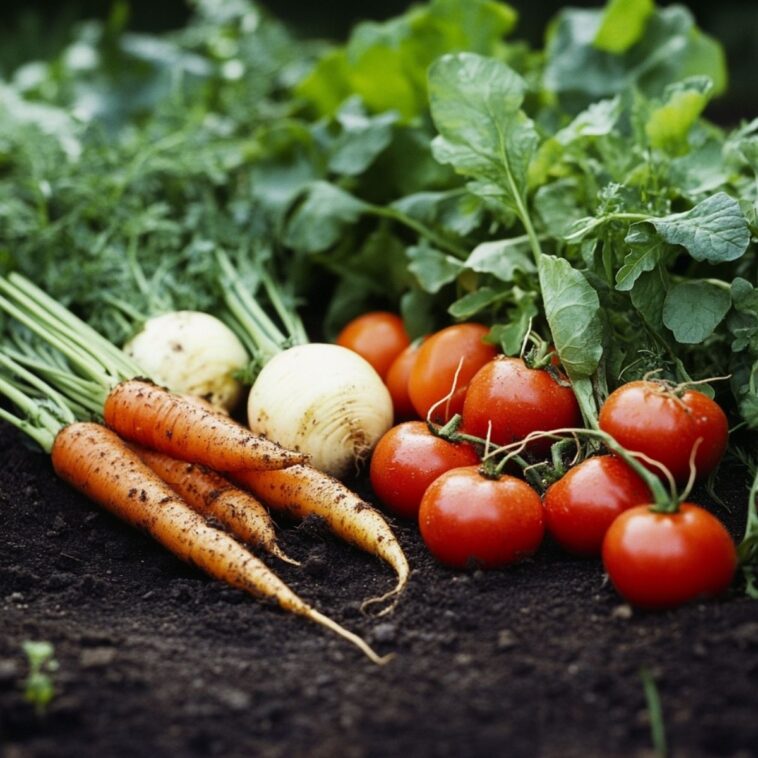Starting a vegetable garden is an exciting venture, whether you’re a seasoned gardener or just starting out. But one of the most important decisions you’ll face is what to plant. Choosing the right vegetables ensures that your garden not only thrives but also provides you with fresh, healthy produce that you’ll actually use. Here are nine tips to help you decide what to plant in your vegetable garden.
1. Consider Your Climate
One of the first things to think about when planning your garden is the climate where you live. Not all vegetables grow well in every climate, so understanding your growing zone is crucial. Vegetables like tomatoes, peppers, and cucumbers thrive in warmer temperatures, while crops like spinach, peas, and carrots prefer cooler conditions.
Tip: Check your USDA Hardiness Zone to find out which vegetables are best suited to your region. You can also note your area’s frost dates, as some plants will need to be sown after the last frost in spring or before the first frost in fall.
2. Start with What You Like to Eat
One of the most practical tips for deciding what to plant in your garden is to consider what vegetables you and your family enjoy eating. While it’s tempting to grow something new or exotic, if no one in your household likes it, it could end up being wasted.
Tip: Make a list of vegetables that are staples in your meals. Do you love fresh salads? Grow lettuce, cucumbers, and tomatoes. Enjoy stir-fries? Consider planting zucchini, bell peppers, and broccoli.
3. Consider the Space You Have
The size of your garden will determine what and how much you can plant. If you have a large garden, you can grow sprawling plants like pumpkins and squash, which need a lot of space. On the other hand, if you’re working with a small space or raised beds, focus on compact crops like lettuce, spinach, and bush beans.
Tip: If you’re limited on space, vertical gardening can be a great solution. Plants like peas, cucumbers, and tomatoes can be trained to grow upward on trellises or stakes, maximizing your garden’s efficiency.
4. Know Your Soil Type
Soil health is critical for a successful vegetable garden. Different vegetables prefer different types of soil, so knowing whether your soil is sandy, clay, or loamy can help you choose plants that will thrive in your garden. You can test your soil’s pH and structure using a simple soil test kit from a garden center.
Tip: Vegetables like carrots, radishes, and potatoes prefer sandy, well-drained soil, while crops like cabbage, lettuce, and spinach do better in heavier, moisture-retaining soil.
5. Factor in Sunlight
Vegetables need sunlight to grow, and the amount of light your garden gets will play a big role in deciding what you can plant. Most vegetables need at least 6-8 hours of sunlight per day, but some plants, like leafy greens, can tolerate partial shade.
Tip: Observe your garden space at different times of the day to determine how much sunlight it receives. For sunny spots, consider sun-loving vegetables like tomatoes, peppers, and squash. In shadier areas, plant shade-tolerant crops like lettuce, kale, and spinach.
6. Plan for Successive Harvests
If you want a steady supply of vegetables throughout the growing season, consider planting crops with different maturity dates or those that can be harvested multiple times. This method, known as succession planting, allows you to continuously enjoy fresh vegetables without needing to replant.
Tip: Start with fast-growing vegetables like radishes or leafy greens, which can be harvested early. Then, replant the same space with crops that take longer to mature, like beans or carrots, to keep your garden productive.
7. Keep Pests and Diseases in Mind
Some plants are more prone to pests and diseases than others, so consider your local pests and past garden issues when selecting your crops. For instance, if you’ve had trouble with tomato blight in the past, you may want to avoid planting tomatoes in the same spot year after year or choose disease-resistant varieties.
Tip: Practice crop rotation, which means planting different types of vegetables in different areas of your garden each year. This helps reduce the build-up of pests and soil-borne diseases. Also, consider companion planting—certain plants can help deter pests from others. For example, marigolds are known to repel nematodes and aphids.
8. Think About Harvest Time and Storage
Some vegetables require daily harvesting, while others can be left in the ground or stored for longer periods. If you have a busy schedule, opt for crops that don’t require frequent harvesting or ones that can be stored easily.
Tip: Root vegetables like carrots, beets, and potatoes can stay in the ground longer and be harvested as needed. Squash and pumpkins, once harvested, can be stored for months in a cool, dry place, making them great options for gardeners who want a low-maintenance crop.
9. Experiment with New Varieties
While it’s important to plant what you know you’ll use, don’t be afraid to try something new. Growing an unfamiliar vegetable can be a fun challenge, and it might become a new favorite in your kitchen. Plus, heirloom varieties and unusual vegetables often bring exciting flavors and colors to your garden.
Tip: Start small when experimenting. Try growing one or two new vegetables or varieties in a small section of your garden. This way, if they don’t work out, it won’t impact the entire garden. You can also try growing them in containers to keep them separate from your main garden area.


